Class 9 Moments Supplementary Reader Chapter 5 Question Answers - The Happy Prince
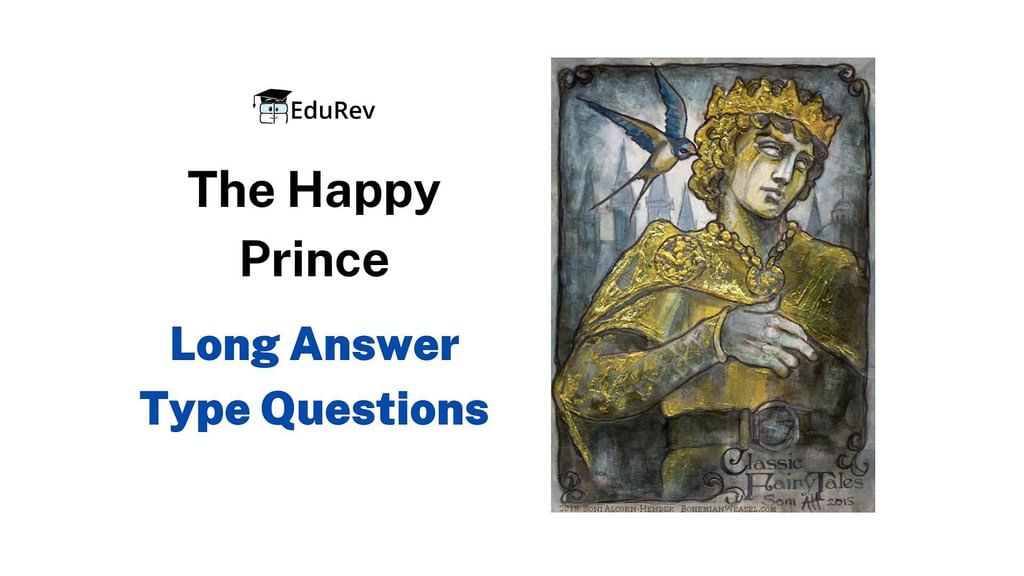
Q1. What does the swallow see when it flies over the city?
Ans:
- As the swallow flew over the city, it witnessed a stark contrast between the lives of the rich and the poor. The swallow noticed that while the rich enjoyed their lives in luxurious homes, the poor suffered outside their gates, often ignored or mistreated. In the affluent areas, people indulged in festivities and material comforts, seemingly detached from the struggles of the less fortunate.
- On the other hand, in the darker and more impoverished parts of the city, the swallow observed the misery of the poor. It saw starving children with pale faces peering hopelessly from alleyways.
- These children, who lacked even basic needs like food and warmth, showed how much suffering and neglect existed in the city. The swallow also noticed two young boys curled up under an archway, trying to stay warm in the cold. Despite their obvious hardship, a cruel watchman heartlessly drove them away, showing how little kindness was shown to the poor.
- Seeing so much pain and injustice deeply affected the swallow. It realized how unfair life was for the city's poorest people, a truth that had also brought the Happy Prince to tears. The swallow now understood the great divide between the rich and the poor and how the city had failed to care for its most helpless citizens.
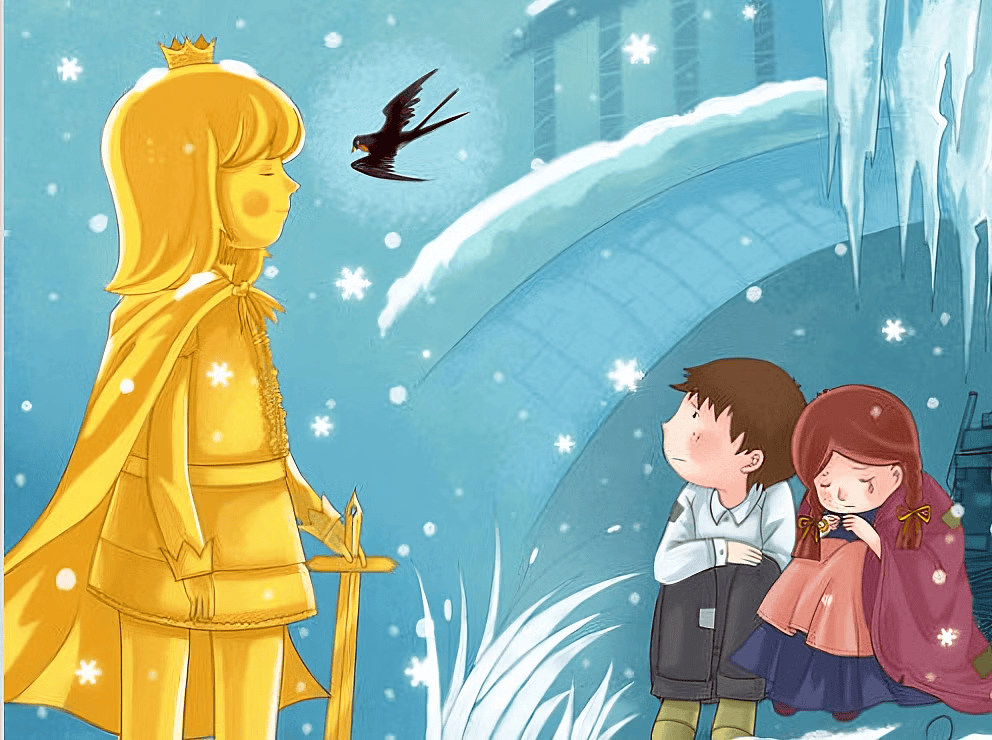 Swallow saw two young boys huddled together under an archway
Swallow saw two young boys huddled together under an archway
Q2. Why do the courtiers call the prince ‘The Happy Prince’? Is he really happy? What does he see all around him?
Ans:
- While he was alive, the courtiers called him the ‘Happy Prince’ because he lived a carefree and luxurious life. He was surrounded by joy and celebrations, never experiencing sorrow or hardship. His palace was always filled with happiness, and he remained unaware of the struggles faced by the people outside its walls. Since the courtiers only saw his easy life, they believed he was truly happy and gave him the title ‘Happy Prince.’
- However, his happiness was not real—it was based on ignorance rather than true fulfillment. It was only after his death, when his statue was placed high above the city, that he finally saw the suffering of the people below. From this new viewpoint, the prince came to understand the harsh realities of life.
- The sight of misery, poverty, and despair filled the prince’s heart with sorrow. He saw the hungry children, the poor seamstress struggling to make ends meet, the playwright without resources, and the many others who suffered silently.
- It was at this point that the Happy Prince realized he had never truly experienced happiness, as his joy had been isolated from the reality of life. Seeing the suffering around him, his leaden heart wept for the first time, and he resolved to help those in need.
- Thus, the Happy Prince’s true happiness came not from living a life of luxury but from the selfless act of giving and easing the suffering of others.
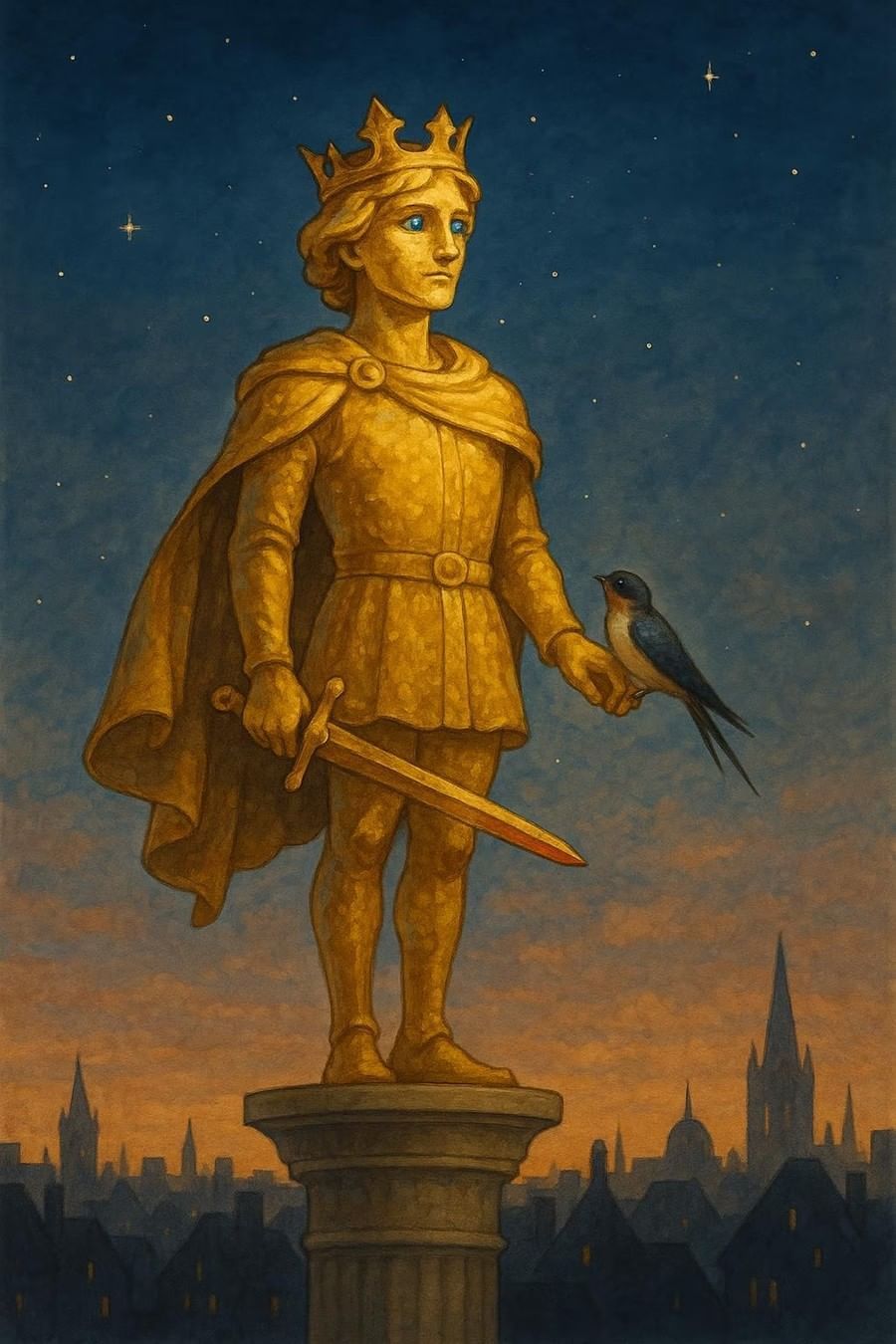 The Happy Prince
The Happy Prince
Q3. When and how did the Happy Prince realise the true meaning of life? What did this realisation prompt him to do?
Ans:
- The Happy Prince had spent his life in comfort, isolated from the suffering of the world. He lived in a palace where sorrow was forbidden, and as a result, he was called the ‘Happy Prince’ by his courtiers and subjects. His life, though joyful on the surface, lacked depth, and he remained unaware of the true nature of human existence—its sorrows and struggles.
- It was only after his death, when his statue was erected atop a tall column, that the Happy Prince experienced a transformation. From his new vantage point, he could see the city in its entirety, and with that, he came face-to-face with the harsh realities that had been hidden from him in life.
- He saw the suffering of the poor, the hunger of children, and the coldness with which society treated the less fortunate. This revelation led him to understand the true meaning of life—not in luxury or personal pleasure, but in compassion, selflessness, and the alleviation of others' suffering.
- Moved by the plight of his people, the Happy Prince decided to take action, even though he was no longer alive in the traditional sense. He began by giving away the precious jewels and gold that adorned his statue, instructing the swallow to deliver them to those in need.
- His selfless acts of charity were driven by his newfound understanding that true happiness lies in bringing relief to others. This realisation fundamentally changed the Happy Prince's purpose, transforming him into a symbol of compassion and kindness, even at the cost of his own adornments and beauty.
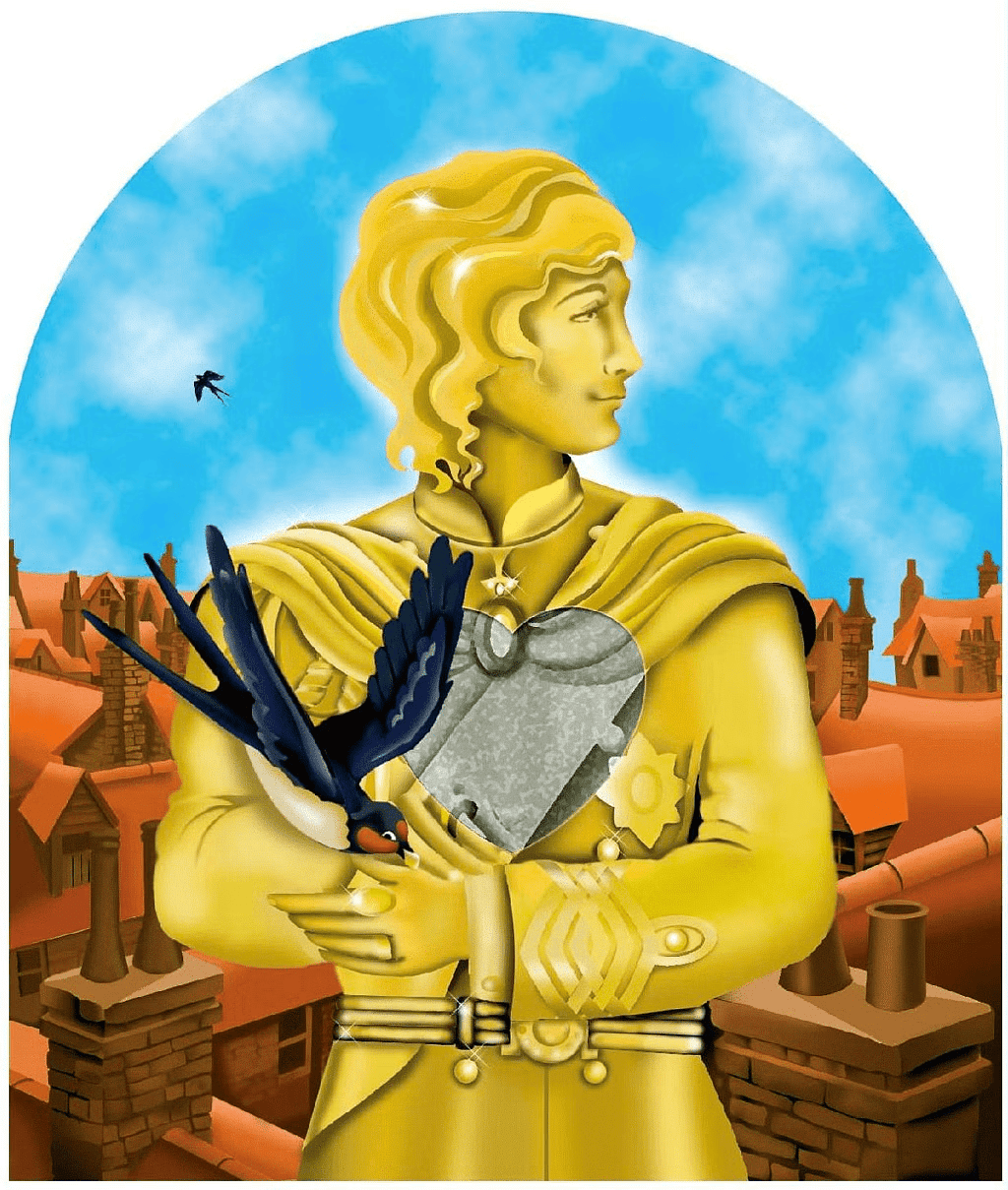
Q4. How did the swallow exhibit the values of unconditional love and devotion?
Ans:
- The swallow's actions throughout the story are a testament to the values of unconditional love and devotion. Initially, the swallow had no intention of staying in the city, as it was on its way to Egypt to join its fellow swallows for the winter. It only stopped by the city to rest for a night, perching itself between the feet of the Happy Prince’s statue.
- However, when the swallow encountered the Happy Prince, it was deeply moved by the prince’s sorrow over the suffering of his people. The prince, who was unable to move, asked the swallow to help him deliver the jewels and gold from his statue to the poor and needy. Despite its initial reluctance to stay, the swallow’s compassion for the prince grew, and it decided to stay another day to help him fulfil his wishes.
- As time passed, the swallow and the Happy Prince grew closer. The swallow became the prince’s eyes and wings, carrying out his acts of kindness with dedication.
- Even as the weather turned colder and its health weakened, the swallow remained by the prince’s side, delivering the jewels from his statue to the poor seamstress, the playwright, and the matchgirl. Despite knowing that staying in the freezing city could cost it its life, the swallow chose to continue helping.
- In the end, the swallow could not survive the cold, but it stayed with the prince until its final breath. Its loyalty and devotion showed its deep love for the Happy Prince.
- By choosing to remain despite the danger, the swallow proved that true kindness and friendship are built on trust, compassion, and a shared desire to help those in need.
Q5. How did the Happy Prince discover true happiness? How did he spread it?
Ans:
- The Happy Prince had never experienced sadness while he was alive, which is why he was called the ‘Happy Prince.’ He lived a life of comfort and was protected from the struggles of the world. But after his death, when his statue was placed high above the city, he finally saw the pain and suffering of the people below.
- Watching the hunger and misery around him, the prince understood that his happiness had been incomplete. Even though his heart was made of lead, he felt deep sympathy for those in need. This was the start of his journey to finding true happiness—not in wealth or luxury, but in helping others.
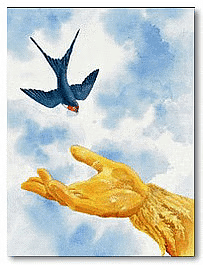
- Wanting to help those in need, the Happy Prince asked a swallow to carry out kind deeds for him. First, he told the swallow to take the ruby from his sword and give it to a poor seamstress caring for her sick son.
- Then, he gave away the sapphires from his eyes—one to a playwright shivering in the cold as he tried to finish his work, and the other to a little girl who was afraid of being punished after dropping her matches in the gutter.
- Finally, the prince asked the swallow to remove the thin gold covering his statue and give it to the poor across the city. By giving away everything he had, the Happy Prince spread real happiness, helping to ease people's suffering.
- Though his statue became dull and lifeless, the kindness he shared filled his heart with a joy deeper than anything he had ever felt before. His selflessness showed that true happiness comes from giving, especially when it brings comfort to those in need.
Q6. Imagine you are the playwright who received the mystery gift of a sapphire. While passing by the statue you get to unravel the mystery when you overhear the general public and councillors discussing the dull statue of the Happy Prince. Write a diary entry expressing your gratitude to the Happy Prince and expressing your dismay at the council’s decision of pulling down the statue.
Ans:
Dear Diary,
For days I have been trying to unravel the mystery of a precious sapphire I found at my desk a few days ago. I wondered who this admirer and saviour were. I wanted to personally thank him for his generous and timely help in saving my life and my career as a playwright.
The mystery got solved today when I was passing by the statue of the Happy Prince. A crowd of people, among them the Mayor and Town Councillors, were discussing how shabby and dull the statue looked without its ruby, sapphires and gold leaves. That is when I realized that the sapphire I had got was actually one of the eyes of the statue of the Happy Prince. That also explained how the poor and needy people in the city were mysteriously getting jewels and gold so that they could end their poverty and miseries. The Happy Prince with the help of the swallow – his noble companion – had brought so much happiness to the poor and downtrodden by sacrificing all he had.
It utterly dismayed me to hear of the council’s decision to pull down the statue because it looked nothing better than a dull, shabby beggar! How callous and ignorant the Mayor and the Councillors are!
However, I shall remain eternally grateful to the Happy Prince and the swallow, his faithful companion, and as a token of my gratitude to them, I am going to write and stage a play to highlight their exemplary sacrifices in bringing joy and happiness to the poor and needy people of the city.
May the soul of the Happy Prince and the swallow rest in eternal peace in the abode of God.
Q7. Why did the Happy Prince request the swallow to stay for another day?
Ans:
- The Happy Prince was on a tall column. From there he could see the miseries of people. He wanted to help the poor. But he could not move. The Prince wanted to help a poor seamstress.
- He sent a ruby to her through the swallow, then the Prince saw a playwright. He was leaning on his desk. He was very handsome. His hair was brown and crisp.
- He was trying to finish a play. But he was feeling very cold. He had no firewood to keep himself warm. The Prince wanted to help him. He wanted to send one of the sapphires of his eyes to the young man. So he requested the swallow to stay for another day.
Q8. What happened to the statue of the Prince and the swallow in the end?
Ans:
- The swallow and the Happy Prince became friends. The swallow loved the Prince for his kindness. He decided not to go away. The Prince sent his ruby and the sapphires of his eyes to the poor people. He sent the gold of his body to the poor children.
- Now he was blind and ugly. Then winter came. The little swallow felt very cold. But he did not leave the Prince. One day, the swallow died. The leaden heart of the Prince broke in two.
- The next day, the statue was pulled down. It was melted in a furnace. But the leaden heart did not melt. It was thrown into a heap. The dead body of the swallow was also lying there. God sent his angel to bring the two most precious things from the city. The angel brought him the leaden heart of the Prince and the dead body of the swallow.
Q9. Draw a brief character sketch of the Happy Prince.
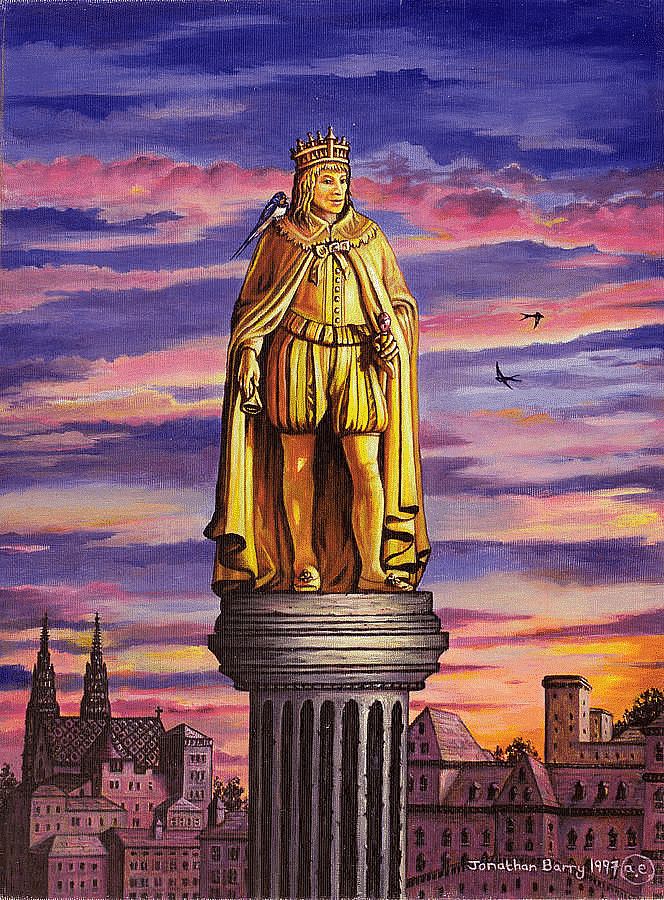
Ans:
- The Happy Prince was a beautiful statue, adorned with gold leaves, bright sapphires for eyes, and a ruby in his sword hilt. Once a joyful man, he was known as the Happy Prince because he had never experienced sorrow or hardship during his life.
- However, after his death, he was placed high on a column, allowing him to witness the poverty and misery surrounding him. This sight filled his heart with pity, prompting him to help those in need.
- He sent the ruby from his sword to a poor seamstress, the sapphires from his eyes to a playwright and a match girl, and the gold from his body to hungry children. His love for a little swallow was profound, and when the swallow died, it broke his heart. Thus, the Happy Prince was a kind and loving figure, willing to sacrifice his beauty for the welfare of others.
Q10. Give a brief character sketch of the swallow.
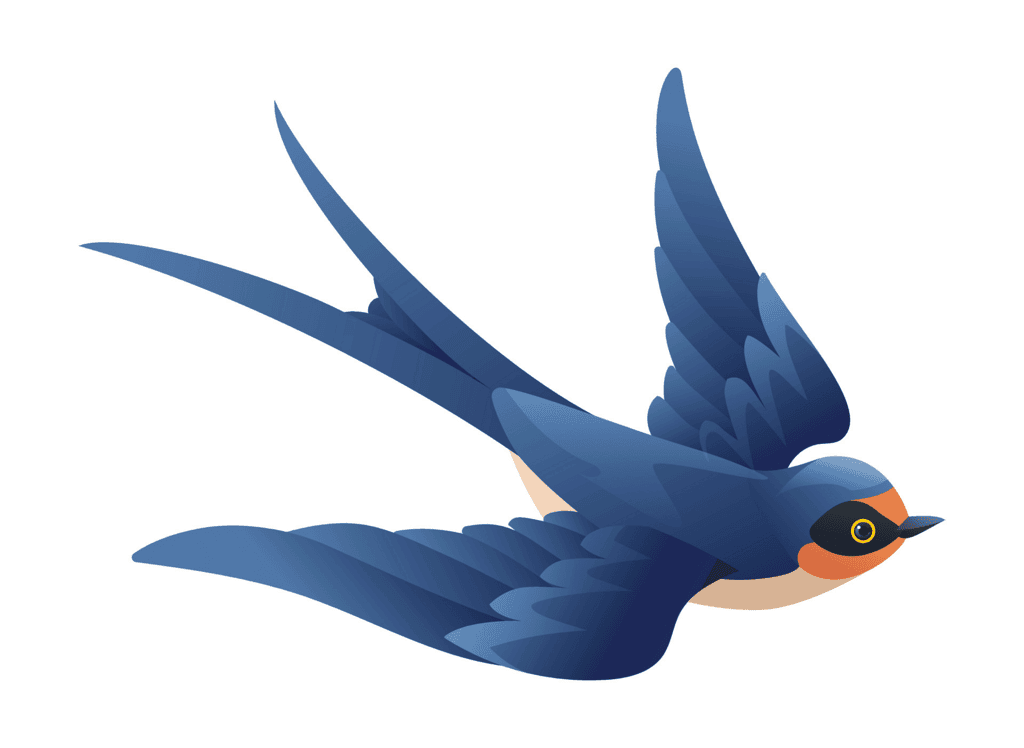
Ans:
- The little swallow is a significant character in the story. Initially, he plans to fly to Egypt to join his friends. However, he agrees to stay an extra day at the request of the Prince.
- During this time, he helps the Prince by delivering a ruby to a seamstress and the sapphires from the Prince's eyes to a young man and a poor girl. Despite the Prince losing his sight, the swallow chooses to remain by his side.
- The swallow demonstrates a kind heart as he comforts the son of a poor woman. When winter arrives, he endures the harsh conditions, surviving on crumbs while refusing to abandon the Prince.
- Eventually, the swallow succumbs to the cold but remains loyal until the end. Even in death, he is united with the Prince, as an angel takes them both to paradise.
Q11. The little swallow was as noble as the Happy Prince. Describe how the swallow played an important role in helping the Happy Prince to carry out his noble deeds?
Ans:
- The little swallow was a kind bird who initially wished to travel to Egypt with his friends. When he first rested at the feet of the Happy Prince, he had no intention of helping anyone.
- However, his true nature emerged when he saw the tears in the Prince's eyes, revealing his deep empathy. As he spent more time with the Prince, the swallow developed a strong sense of service and compassion for others. He assisted the seamstress by delivering a ruby and fanned a sick boy with his wings.
- The swallow also helped a playwright and a match girl, demonstrating his commitment to aiding those in need. When the Happy Prince became blind from giving away his jewels, the swallow chose to stay instead of leaving for Egypt. Ultimately, he sacrificed his life for the Prince, falling at his feet in a final act of loyalty.
Q12. The two most precious things in the city were the Happy Prince and the swallow. Do you agree? Explain.
Ans:
- The two most precious things in the city were the leaden heart of the Happy Prince and the dead swallow. The Happy Prince sacrificed his beautiful possessions to help those in need.
- He gave away his gold and jewels to the poor, demonstrating his selflessness. The swallow, who chose to stay with the prince instead of migrating to Egypt, fulfilled the prince's wishes by delivering these treasures to suffering people.
- Despite harsh weather, he remained loyal and ultimately died at the prince's feet. Thus, the angel was correct in taking the leaden heart of the prince and the dead swallow to Heaven.
Q13. How did the Swallow show obedience as the greatest virtue of living things?
Ans:
- The Swallow demonstrated his obedience as a key virtue throughout the story. Whenever the Happy Prince asked him to assist those in need, the Swallow complied without hesitation.
- Over time, he grew fond of the Prince and chose to remain by his side. Despite becoming weaker from his selfless acts, the Swallow continued to serve the Prince faithfully.
- His unwavering loyalty and willingness to help others highlighted that obedience was indeed his greatest quality.
|
261 videos|1364 docs|124 tests
|
FAQs on Class 9 Moments Supplementary Reader Chapter 5 Question Answers - The Happy Prince
| 1. What is the main theme of "The Happy Prince"? |  |
| 2. How does the relationship between the Happy Prince and the swallow develop in the story? |  |
| 3. What sacrifices do the Happy Prince and the swallow make for the sake of others? |  |
| 4. What is the significance of the ending of "The Happy Prince"? |  |
| 5. How does Oscar Wilde use symbolism in "The Happy Prince"? |  |






















